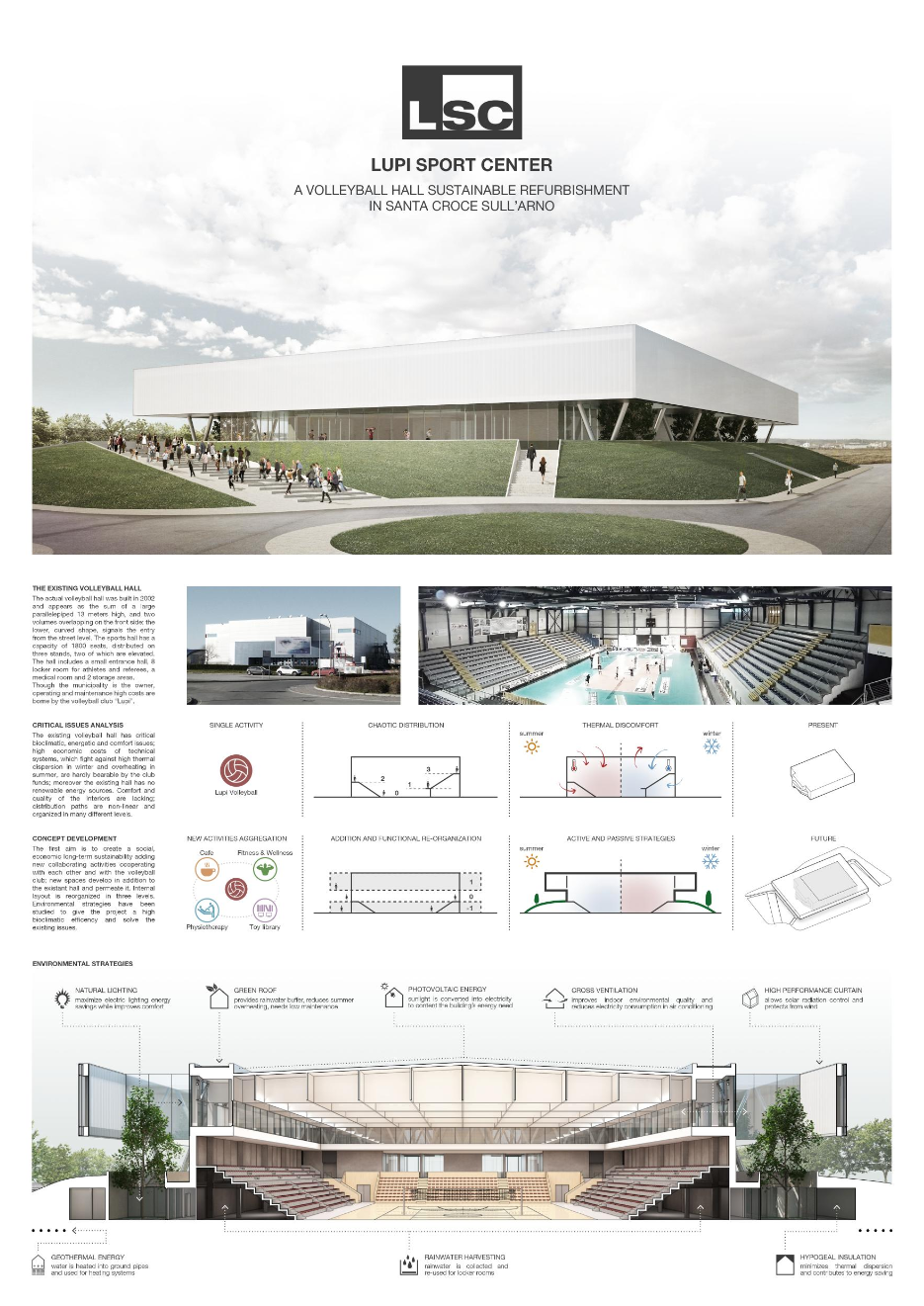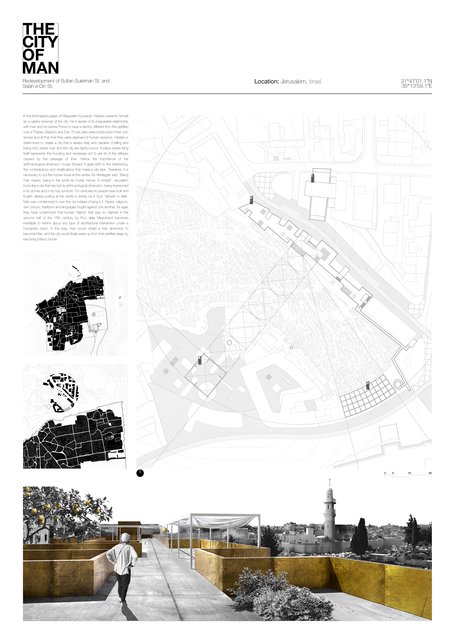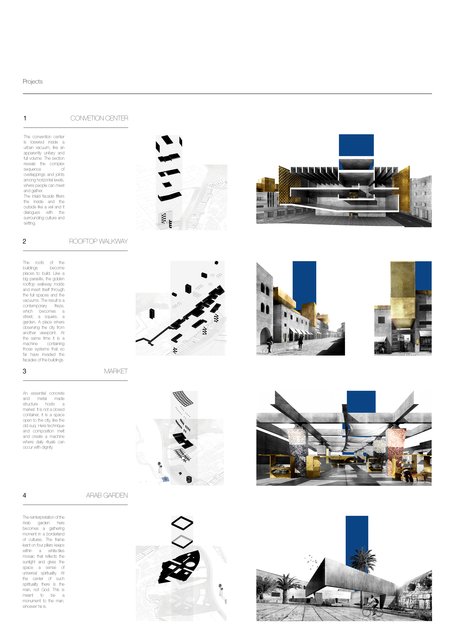European Architectural Medals 2017
European Architectural Medals for the Best Diploma Projects (EAM BDP) is an annual European competition that awards excellence in crossing the threshold from education to profession and is an European competition open to students:
- enrolled in an Architectural School in Europe at Master level
- defending their Diploma Projects in 2016 – 2017 academic year
- whose graduation projects are endorsed as “The Best Diploma Projects” by their Architecture School upon a selection process
LUPI SPORT CENTER: a volleyball hall sustainable refurbishment in Santa Croce sull'Arno

Author comments:
This graduation thesis represents the end of a personal growth path experienced on two fronts: university studies and volleyball player career. Through the direct experience of many sports facilities typologies, from the school gyms to the sports halls, it was my prerogative to face the issue of acting on an existing sports hall to integrate it in a sustainable social, economic and environmental context.
Santa Croce sull’Arno volleyball hall reveals same critical issues as most of sports facilities do: maintenance issues, high costs of technical systems, deficient energy performance and lack of energy-saving active/passive systems.
After an in-depth analysis of the existing volleyball hall integrated in its urban context, and of some leading european sports facilities, I’ve formulated a redevelopment proposal which aim is to fix the environmental existing issues and create a long-term sustainability adding new collaborating activities. The formal design mean to make the new Sport Center a real landmark.

THE CITY OF MAN Redevelopment of Sultan Suleiman St. and Salah e-Din St. in Jerusalem
by Gabriele Martella, Simone Orlandi from University of Florence, Italy
Tutored by: Michelangelo Pivetta

Author comments:
In the fictionalized pages of Marguerite Yourcenar, Hadrian presents himself as a careful observer of the city. He is aware of its inseparable relationship with man and he wishes Rome to have a destiny different from the petrified one of Thebes, Babylon and Tyre. Those cities were imprisoned in their own stones and at that time they were deprived of human essence.
A place where living itself represents the founding and necessary act to get rid of the stillness caused by the passage of time.
Hence the importance of the anthropological dimension moves forward: it gives birth to the intertwining, the contradictions and stratifications that make a city alive.
As Heidegger said: “Being man means: being in the world as mortal, hence: to inhabit”.
For centuries its people have built and fought, always putting at the centre a divinity, be it God, Yahweh or Allah. Man was condemned to own the city instead of living in it.
Races, religions, skin colours, traditions and languages fought against one another; for ages they have undermined that human “dignity” that was so claimed in the second half of the 15th century by Pico della Mirandola.
It becomes inevitable to rethink or think about any type of architectural intervention under a humanistic perspective. In this way, man would obtain a holy dimension to become Man, and the city would finally wake up from that petrified sleep by becoming Man's Home.


Ultimo aggiornamento
18.05.2021




